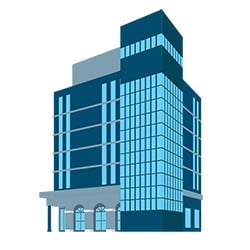%20and%20how%20is%20it%20calculated%3F-1282631484.jpg?width=750&height=392&name=What%20is%20after%20repair%20value%20(ARV)%20and%20how%20is%20it%20calculated%3F-1282631484.jpg)
The After Repair Value (ARV) is the estimated value of a property after repairs, remodeling, or improvements are completed. Determining the ARV of a property is one component in deciding whether it’s a good investment. If the potential acquisition has a significantly greater ARV (customarily at least 25 percent) than the cost of buying, holding, repairing, and selling it, then it makes sense.
For example, suppose you consider acquiring an apartment building that needs work. You can buy it for $110,000, and it needs $100,000 in repairs to make it attractive to renters. If you will need to spend $15,000 in holding costs, the total cost for that project is $225,000. According to this equation, if you determine that the ARV is $250,000, it’s not a good buy since 75 percent of the ARV is $187,500. But suppose that the ARV is $330,000. In that case, the combined cost to acquire, hold, and repair the building is $247,500, and you could earn a profit. The 75 percent figure is also a benchmark that lenders will employ to decide how large a loan to authorize for the project. However, in some markets and sectors, the maximum is calculated at 70 percent rather than 75. Therefore, each project calculation requires an independent evaluation.
How Can You Calculate the ARV?
One common way to value commercial property is via sales comparisons. Analysts look at recent sales for comparable buildings in the same area. The catch is that when you want to estimate the value, you seek to determine the potential of a facility that exists on paper or in the potential buyer's imagination. A comparable sale would be a similar building that doesn’t need or already has had the planned improvements. It’s challenging to predict the impact of specific repairs or upgrades on market value. Further, market conditions may change while the project is underway, increasing or decreasing the potential profit.
Taking another example, suppose you are considering a project with an office building that is in disrepair. You can buy it for $100,000 and remodel it for another $50,000, with holding costs of $10,000 or a total investment of $160,000. To determine whether the ARV is around $212,000, you look at similar properties in the vicinity. If newer, well-maintained buildings are selling for more than that (on a comparable square-foot basis), you are on the right track. In contrast, if well-regarded facilities in the area with similar amenities to the future finished product are on the market for less, you may want to reconsider.
Alternate Valuation Methods May Help
For some commercial buildings, alternate valuation methods can help determine the ARV by simplifying the projection of value for the project. One option is the cost approach, which evaluates the cost of rebuilding from the ground up. This method can help if there are inadequate comparable properties to consider. Using an expert to conduct an official appraisal before proceeding may be advisable in some circumstances, even though it will add to the project's overall cost. The assessment will also provide support for the financing effort.
The potential investor can increase the odds of success by ensuring that the potential for a 25 or 30 percent upside exists with an ARV calculation before initiating a rehabilitation project.
This material is for general information and educational purposes only. Information is based on data gathered from what we believe are reliable sources. It is not guaranteed as to accuracy, does not purport to be complete and is not intended to be used as a primary basis for investment decisions.



